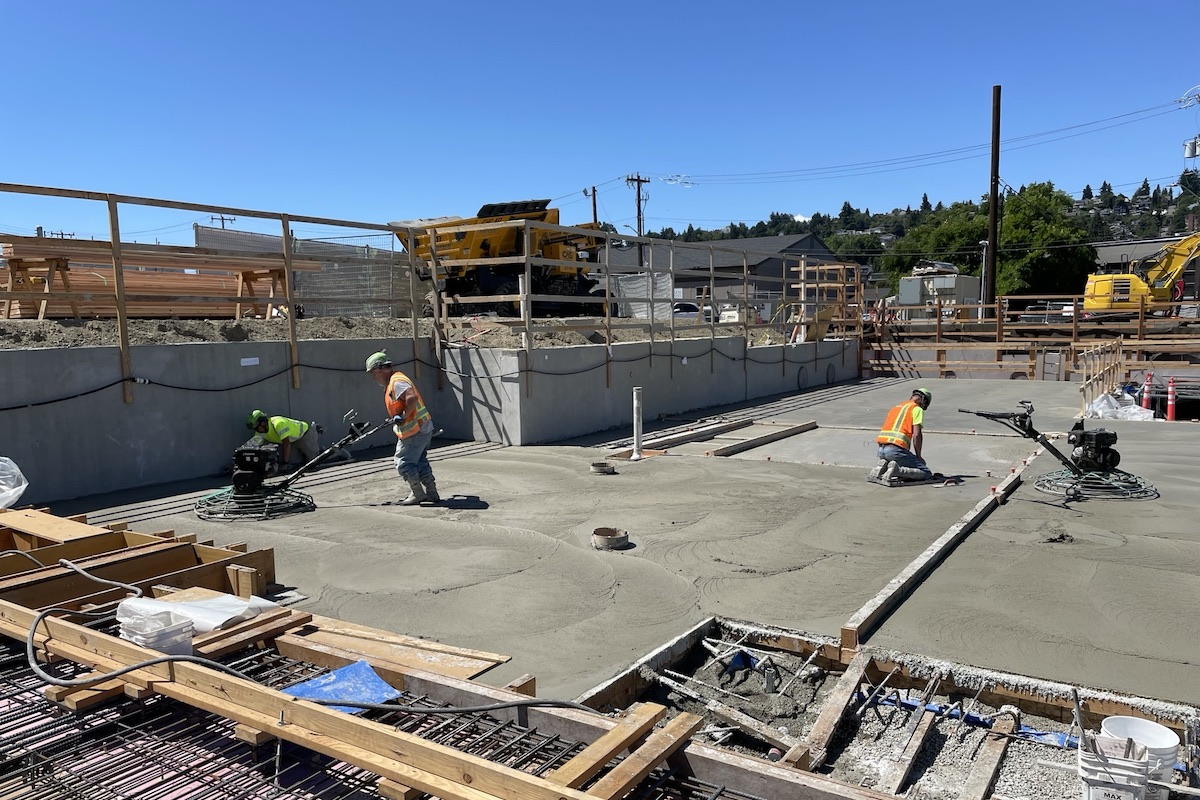Forgoing the traditionally siloed architecture, engineering and construction disciplines using BIM can develop more integrated workflows to improve collaboration through the entire building lifecycle from concept to demolition or renovation. And, for rental companies a major advantage of BIM is that at a very early stage the equipment required at a job site can be identified and transportation can be planned. This allows the right product to be delivered at the right time to complete the work at hand.
Also, using models ensures equipment users have the benefit of the most up-to-date specifications, so models look and act as the real equipment would on the job. For example, OEM-specific BIM libraries allow architects and design engineers to utilize exact equipment models at the earliest stages of a construction project to assure that design elements can be accessed throughout construction, then maintained post construction. For instance, OEM BIM models that contain machine specifications ensure that the equipment selected is suitable for both the short- and long-term work at hand.
Historically, the building design process has been very linear with little control over how information passes back and forth between client, architects, and contractors. The information is typically in the form of a two-dimensional print trying to describe a highly complex three-dimensional shape. This leads to information getting lost, misinterpreted or simply not being communicated. As most projects are unique, these issues drive a lot of waste into the project.
Primarily through a data-rich 3-D full building model, the BIM framework allows construction companies to plan the construction of a project in detail. This information is accessible by all project stakeholders and is updated and maintained throughout the building project, making it the one safe source of all project data.

| Your local Superior dealer |
|---|
| Westate Machinery Co |
According to Hahessy and Doherty, the top benefits of using BIM technology for construction projects are:
Eliminate of project waste and reduce overall project risk by:
- Better visualization: Eliminates misinterpretations and delays through late changes.
- Clash detection: Contractor models get incorporated into the building model, so the electrical contractor can see the structural contractor model and plan accordingly.
- Site planning improvements, material and machine logistics: Helps to answer questions like “Will machines meet the needs and fit into the site? Where is the optimal place to deliver and store material?”
- Accurate bill of material or part counts: If you build a school or commercial building, for example, how many windows do you need? Manual count leads to errors; automatically counting ensures the right amount will arrive on-site to avoid delays.
- Simulate construction, allowing the main contractor to plan, practice and optimize the process. This minimizes potential problems and delays and helps deliver on-time, on-cost projects.
- Plan ongoing maintenance, keeping building operational expenditure to a minimum. This is especially important in government projects looking to keep ongoing financial commitments to a minimum.
This proved true for Turner Industries Group, LLC, on a project to install a 14-foot tall, spherical sculpture for the Rotary Club of Baton Rouge, Louisiana, on the Mississippi Riverfront.
From initial planning stages using the BIM model of the JLG 1255 Telehandler through the final installation, JLG helped their customer at Turner Industries Group, LLC install this unique sculpture with absolute confidence.
“One wrong little step and you would’ve been hearing about this on the news,” said Mark Kenney, Rigging Engineer on the project.

| Your local Gomaco dealer |
|---|
| American Construction Supply |
| Tri-State Truck & Equipment Inc |
Using the BIM model for the telehandler, however, Mark and his team were able to leap that hurdle with ease. The 3-D BIM model’s precise specifications allowed them to visualize its exact placement on the levee and share that information with the Rotary Club and the artist of the sculpture.
“It was much easier…versus looking at a specifications sheet,” Kenney said, “Since it was a 3-D model, I was able to put the boom with the telehandler to show the customer how we planned on doing it. It worked out really well.”
Fortunately, thanks to effective planning with the BIM model and prior communication with JLG, the team knew they had exactly the right equipment to get the job done.
“The lifting hook attachment turned out to be the best way to do that due to space restrictions and flexibility,” said David Bondurant, Manager of the Rigging Department on the project.
In coordination with a 165-ton-capacity crane, the JLG 1255 Telehandler’s lifting hook attachment helped juggle each piece into position.

| Your local Volvo Construction Equipment dealer |
|---|
| PacWest Machinery |
“We set it in position with the crane and then transferred the lifting from the crane to the forklift. The forklift held it, then we went back and got the second piece, lifted it up and set it on its foundations. Then we worked the crane and the forklift together to make the connection at the top center area.”
The artist, San Francisco-based Po Shu Wang, was also there looking over the installation and “was loving every minute of it,” Bondurant said.
Today, the 14-foot-tall sculpture resembles three stainless steel, reflective spheres nestled within each other. Visible from the Mississippi River bridge, this piece is illuminated by LED lights at night – it’s reflective surfaces helping to brighten the riverfront.
Whether you are a contractor, rental company owner or architect, using BIM models to preplan for upcoming projects and make informed decisions about the job site lets you anticipate challenges, streamline communications, manage risk and eliminate guesswork in the built environment – and ultimately increasing efficiency.

| Your local Metso Minerals Industries Inc dealer |
|---|
| PacWest Machinery |
| Westate Machinery Co |




































































